Reading the admission plan to choose a university with her younger brother, Ms. Thanh Lam laughed when she saw that in every school "90-100% of students have jobs".
Three years ago, Thanh Lam, 26 years old, received a job survey link one year after graduating from her old university. After being reminded for the third time, she entered to fill in her personal information and answer some survey questions.
According to the list compiled by the class monitor, only 14/47 students of Lam class completed this survey. All of the respondents were employed. According to information published by the school since then, the employment rate of students has been around 90% every year.
"With a very small student response rate, like my class, less than a third, not to mention no need for proof, I don't find the numbers the school publishes trustworthy," Ms. Lam shared. With a younger brother preparing for university admission and researching majors and schools, Ms. Lam advised to ignore information about employment rates because "they are similar, both above 90%."
In fact, the "sky-high" employment rate of university graduates makes many people skeptical, saying it is inaccurate, while this is important data to help candidates and parents orient their careers.
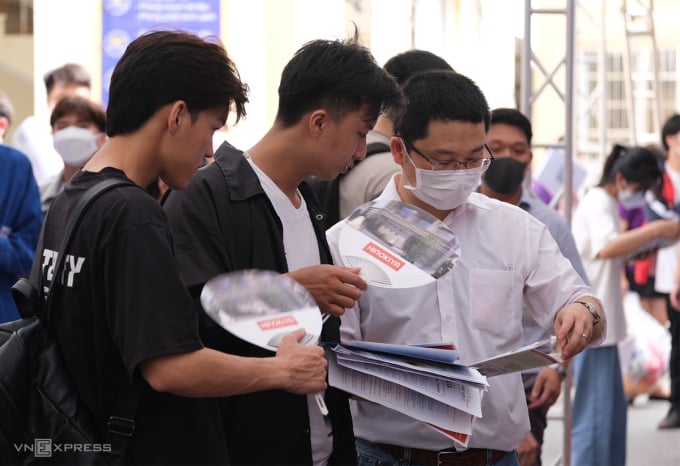
Students chat with employers at the Hanoi University of Industry's job fair on June 4, 2022. Photo: Duong Tam
According to the report on student employment situation in the period 2018-2021 of the Ministry of Education and Training , the rate of students having jobs after 12 months of graduation is always above 90%.
At the University of Electricity, this rate in 2020 was 98% in all majors. At the University of Commerce, the rate reached 98.89%, some majors reached 100% such as Accounting, Management Information Systems, E-commerce. Ho Chi Minh City University of Architecture also announced the employment rate of students in this year's enrollment plan was 98.54%, many majors reached 100% such as Interior Design, Landscape Architecture, Water Supply and Drainage Engineering, Information Technology.
However, Navigos Group - the largest employment services company in Vietnam, released data in May showing that the demand for recruiting new graduates in the first four months of this year decreased by 49% compared to the same period in previous years before Covid-19.
A month earlier, Dr. Do Thanh Van, Deputy Director of the Center for Human Resources Demand Forecasting and Labor Market Information of Ho Chi Minh City, also shared that in 2023, the city's demand for trained labor is forecast to account for 86.45% of the total workforce, of which university degrees account for only 23.54%.
Many alumni also say that the figures from the schools are inaccurate.
Nearly a year after graduating from the Academy of Journalism and Communication, Ha Duy, 23, and many of his classmates have not received any job survey requests. Meanwhile, Nguyen Tu, who graduated from the University of Construction in 2022, said he took the school survey but could not remember all the content because the questionnaire was too long and many questions were "filled in haphazardly".
"Did the school select a sample to survey to come up with a good number?", Duy asked.
An official at a university in Hanoi said that normally, schools always count the ratio of employed students to the total number of responses and the ratio of employed students to the total number of graduates (including those who did not respond).
"These two rates are always different, in which the rate calculated based on the number of students responding is often very high because most schools do not reach 100% response, some majors even have less than 50%. Students who participate in feedback often have jobs," this officer shared.
For example, the University of Commerce has 98.9% of students employed based on the number of responses. But if the total number of graduates is calculated, this rate is 77.9%. Similarly, these two rates at the University of Food Industry in Ho Chi Minh City are 97.7% and 75.1% respectively.
According to the guidance of the Ministry of Education and Training, the enrollment plan needs to publicize the rate of graduates who have jobs, without specifying which rate.
"Schools often declare the employment rate based on the total number of students who responded, so the numbers are very good," she said. This is not wrong, but the data is ambiguous and difficult to evaluate accurately because the survey form is not standard.
The sector with the highest employment rate as reported by the Ministry of Education and Training.
Dr. Le Viet Khuyen, former Deputy Head of the Department of Higher Education (Ministry of Education and Training), Vice President of the Association of Vietnamese Universities and Colleges, said that "beautifying" data causes parents and students to make wrong predictions about labor demand in various industries and occupations, seeing job opportunities as rosy, and thus leading to wrong orientation.
This, according to Mr. Khuyen, stems from the pressure of collecting tuition fees. He explains that schools are moving towards financial autonomy, budget allocations are decreasing, so tuition fees are the main source of income for most schools. However, tuition fees must follow government regulations and cannot be increased dramatically, so if you want to increase revenue, you must increase enrollment. Meanwhile, according to regulations of the Ministry of Education and Training, to increase the quota, schools must have a rate of graduates having jobs within 12 months of 80% or more.
"That is one of the reasons why schools embellish their student employment rate figures," Mr. Khuyen commented.
From the university perspective, Mr. Pham Thai Son, Director of the Admissions and Communications Center of Ho Chi Minh City University of Food Industry, said that it is very difficult to provide employment figures close to reality.
"We have a team of about 50 members, trained in interviewing skills to survey students, but the number of responses cannot reach 100%. Not to mention, it is very difficult to verify whether the responses are accurate or not," said Mr. Son.
Dr. Khuyen also said that to get real results, it takes a lot of effort and meticulousness from the connection, so that students see their responsibilities even after graduation, to building a reasonable questionnaire.
"Therefore, student employment surveys should be conducted by an independent unit to create greater objectivity," Mr. Khuyen said.
*Names of some characters have been changed
Source link



![[Photo] Prime Minister Pham Minh Chinh chairs meeting to deploy overcoming consequences of storm No. 10](https://vphoto.vietnam.vn/thumb/1200x675/vietnam/resource/IMAGE/2025/10/3/544f420dcc844463898fcbef46247d16)


![[Photo] Students of Binh Minh Primary School enjoy the full moon festival, receiving the joys of childhood](https://vphoto.vietnam.vn/thumb/1200x675/vietnam/resource/IMAGE/2025/10/3/8cf8abef22fe4471be400a818912cb85)





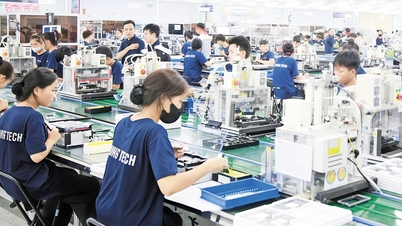

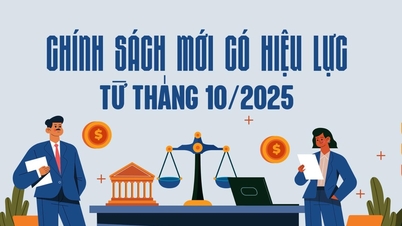

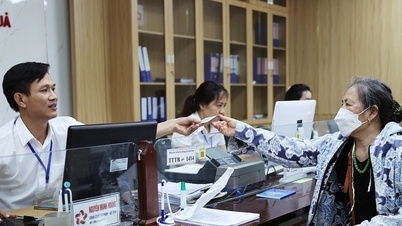





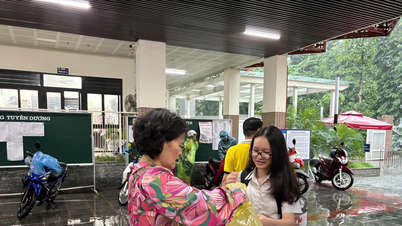






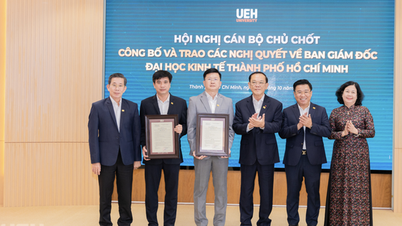













































































Comment (0)